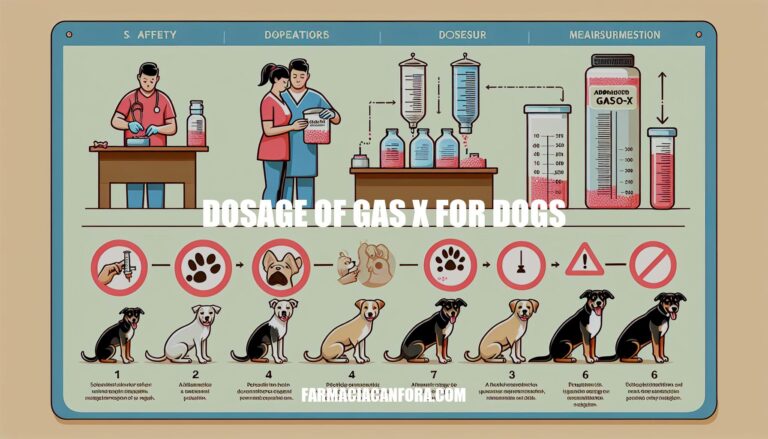


Understanding the correct dosage of Gas-X for dogs is crucial for their safety and health. Administering the right amount helps alleviate discomfort from gas without causing adverse effects. Overdosing can lead to serious health issues, so always consult your veterinarian to determine the appropriate dosage based on your dog’s weight and specific needs.
Gas-X is an over-the-counter medication used to relieve gas and bloating. Its active ingredient is simethicone, which works by breaking up gas bubbles in the stomach and intestines. For dogs, it is commonly used to alleviate discomfort from gas and bloating, helping them expel gas more easily. Always consult a vet before giving any medication to your pet.
The correct dosage of Gas-X (simethicone) for dogs is influenced by several factors:
Weight and Size: Dosage is typically based on the dog’s weight. For example, a common guideline is 1/4 of a 125mg tablet for every 10 pounds of body weight. Small breeds may require as low as 20mg, medium breeds around 40mg, and large breeds up to 80mg.
Specific Health Conditions: Dogs with certain health conditions may need adjusted dosages. Always consult a veterinarian to determine the appropriate dosage based on the dog’s overall health and specific conditions.
Severity of Gas-Related Issues: The severity of the gas problem can also affect the dosage. More severe cases might require a higher dosage, but this should be determined by a vet.
Age and General Health: Older dogs or those with other health issues may need a different dosage. A vet can provide guidance based on the dog’s age and general health status.
Always consult with a veterinarian before administering any medication to ensure safety and efficacy.
Here are the general dosage guidelines for Gas-X (Simethicone) for dogs:
Always consult with your veterinarian before giving any medication to your pet.
It’s crucial to consult a veterinarian to determine the appropriate dosage of Gas-X for your dog. Each dog is unique, and factors like size, weight, and overall health can affect the correct dosage. Incorrect dosing can lead to serious side effects such as diarrhea, vomiting, or even toxicity. Always seek professional guidance to ensure your pet’s safety and well-being.
Gas X is generally safe for dogs, but there are potential side effects to watch for:
After administering Gas X, monitor your dog for these symptoms and contact your vet if you notice any adverse reactions.
Administering Gas-X to dogs requires careful consideration of their weight, size, specific health conditions, severity of gas-related issues, age, and general health. Always consult with a veterinarian to determine the correct dosage based on these factors.
The general guidelines for Gas-X (Simethicone) dosages are:
However, each dog is unique, and incorrect dosing can lead to serious side effects such as diarrhea, vomiting, or toxicity. It’s crucial to seek professional guidance from a veterinarian to ensure your pet’s safety and well-being.